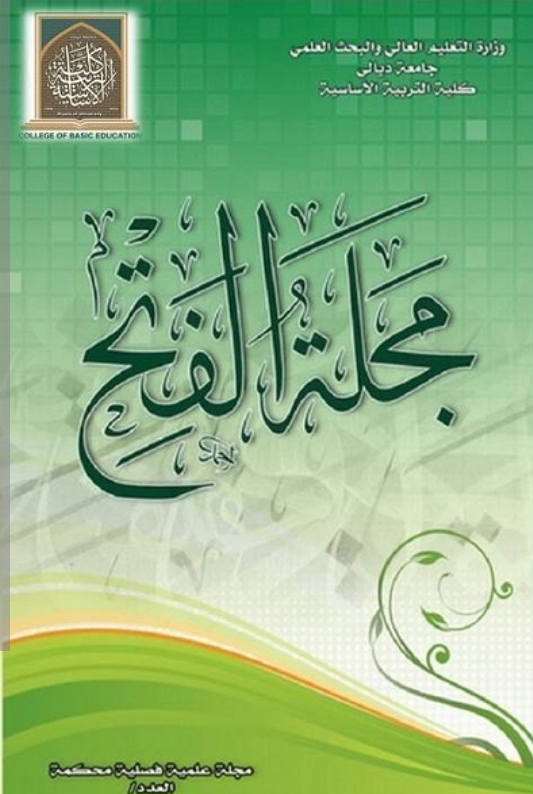Content-Based Instruction/ Learning: A Rewarding Investment in the Interrelated Triangle of Language, Literature and Culture
Keywords:
content-based instruction, language, literatureAbstract
The study aims to explain how essential is content-based instruction in teaching-learning English as a foreign language. Supported by examples from local and non local actual learning environment, the researcher argues that content-based instruction can be vitally effective in teaching-learning English.
The content-based instruction theory adopted in English language teaching (ELT) class looks at language as a living entity, not mere words, as a reservoir of man’s experiences, history and values represented aesthetically in literature.
This is the premise on which the content-based instruction rests. The environment of (ELT) invites the learners not to wrestling with grammatical rules in isolation of contextualized situations. Rather, it introduces them with authentic material – language as it is actually used. The content (text + context) can ensure a pleasurable interaction between the learner and the target language.
Examples of integrating literature were presented by the researcher as good media for (ELT) in her Translation Class. The end result was surprising: an environment that ensured enjoyment, motivation and critical thinking not to mention a good intercultural interaction between the source language (Arabic) and the target language (English), a factor necessary to assimilate English as a foreign language.
References
Bibliography
• Adaskou et al. (1990). ‘Design Decisions on the Cultural Content of a Secondary English Course for Morocco’. in Sardi Csilla (2002). ‘On the Relationship between Culture and ELT’. Kalbu Studijos, No 3. (www.kalbos.lt/Zurnalia)
• Afolayan, A. (1972). ‘The Relevance of Language Study for the Teaching and Learning of English Literature in Nigeria’ in Lawal, Adebayo . ‘Values and Limitations of Using Literary Text for Teaching ESL’ (www.unilorin.edu.ng/journals/education.
• Bassnett, Susan (1980) Translation Studies. London and New York: Methuen.
• Cruz, Jose (2010 ). ‘The Role of Literature and Culture in English Language Teaching’, Universidad Autonoma Metropolitana / Relinguistica, No. 7 (www.relinguistica.azc.uam.mx/no 007).
• Duff, A. (1989). Translation in Popovic, R. ‘The place of Translation in Language Teaching’ (www.sueleather associates.com).
• Haynes, Charles (2000). ‘The Old Man and the Sea: A data-Driven, Corpus-Based Grammar-Reading Course’, in Marcia Pally (ed.) (2000), Sustained Content Teaching in Academic ESL/EFL, USA: Houghton Mifflin
• Hernandez, Ana (2003). ‘Making Content Instruction Accessible for English language Learners’ in English Learners: Reaching the highest Level of English Literacy, International Reading Association. (www.Learners.org/workshops).
• House, Julian. (2013) . Translatation. Oxford: Oxford University Press.
• Pally, Marcia (ed.) (2000) ‘Sustaining Interest/Advancing Learning’ in Sustained Content Teaching in Academic ESL/EFL, Boston: Houghton Mifflin
• Paran, Amos (ed.) (2006). ‘Literature in Language Teaching and Learning, Virginia: TESOL, Reviewed by Karim Sadighi, University of Urmia, Iran.
• Popovic, R. (-----). ‘Translation in language Teaching’ Sue Leather Associates (www.sueleatherassociates.com.
• Schaffiner, C. (1998) . Qualifications for Professional Translators. Translation in Language Teaching Versus Teaching Translation. St. Jerome publishing in Dagiliene, Inga. (2012). ‘Translation as a Learning Method in English Language Teaching’ Kalbu Studijos, N0 21 . (www.kalbos.lt/Zurnalia).
• Shanahan, Daniel (1997). ‘Articulating the Relationship between Language, Literature and Culture: Towards a New Agenda for Foreign Language Teaching and Research’, The Modern Language Journal (MLJ), Vo. 81.2 pp. 164-1174 (www.Jstor.org).
Downloads
Published
How to Cite
Issue
Section
License
Copyright (c) 2023 https://creativecommons.org/licenses/by/4.0/

This work is licensed under a Creative Commons Attribution 4.0 International License.
حقوق النشر والترخيص
تطبق مجلة الفتح للبحوث التربوية والنفسية ترخيص CC BY (ترخيص Creative Commons Attribution 4.0 International). يسمح هذا الترخيص للمؤلفين بالاحتفاظ بملكية حقوق الطبع والنشر لأوراقهم. لكن هذا الترخيص يسمح لأي مستخدم بتنزيل المقالة وطباعتها واستخراجها وإعادة استخدامها وأرشفتها وتوزيعها ، طالما تم منح الائتمان المناسب للمؤلفين ومصدر العمل. يضمن الترخيص أن المقالة ستكون متاحة على نطاق واسع بقدر الإمكان وأن المقالة يمكن تضمينها في أي أرشيف علمي.
لمزيد من المعلومات، يرجى متابعة الرابط: https://creativecommons.org/licenses/by/4.0/.



